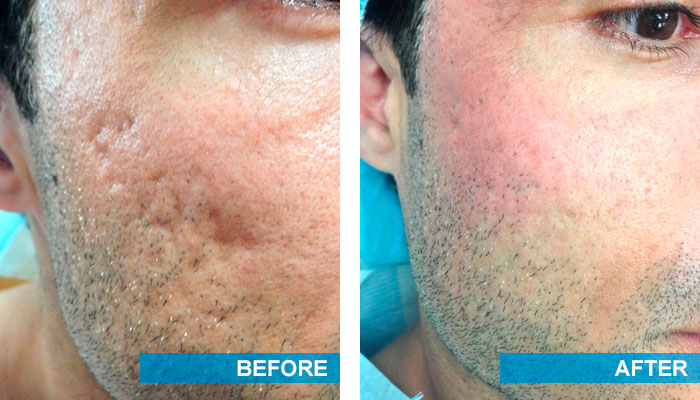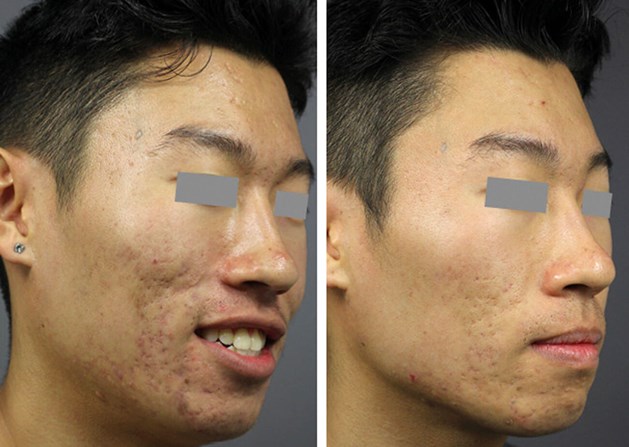Acne and Acne Scars Treatment: Transform Your Skin with Proven Solutions
Acne and Acne Scars Treatment: Transform Your Skin with Proven Solutions
Blog Article
Checking Out Skin Problems: Identifying and Treating Acne Scars for Healthier Skin
Acne marks represent a significant concern for people seeking to maintain healthy and balanced skin, as they can impact both appearance and self-worth. Recognizing the different types of marks, from atrophic to hypertrophic, is necessary for figuring out suitable therapy choices. While professional treatments like chemical peels and microneedling can be effective, the importance of individualized care strategies can not be overstated. Preventative procedures play an important duty in reducing future scarring. As we discover these aspects, one have to think about just how the best approach can lead to transformative outcomes.
Recognizing Acne Scars
Comprehending acne marks is crucial for any individual that has experienced severe acne, as these marks can have an enduring influence on both physical appearance and mental health. Acne scars form when the skin goes through inflammatory feedbacks during active acne sores. The extent of scarring is frequently influenced by aspects such as the sort of acne, its duration, and individual skin qualities.
The body's all-natural recovery procedure can cause either atrophic marks, which look like depressions in the skin, or hypertrophic scars, which are increased and arise from overproduction of collagen. Additionally, the mental toll of acne marks ought to not be undervalued; numerous individuals report feelings of embarrassment, anxiety, and decreased self-worth. This emotional burden can affect social communications and total top quality of life.
Resolving acne marks needs a detailed understanding of their development and impact. Awareness of the potential for long-term effects connected with without treatment scars can motivate people to look for proper treatments. Early intervention and reliable administration techniques can considerably improve skin look and improve mental resilience, stressing the value of comprehending the complexities surrounding acne marks.
Kinds of Acne Scars
Acne marks can be classified into distinctive kinds, each displaying unique features and needing particular treatment strategies. The main sorts of acne marks include atrophic, hypertrophic, and keloid marks.

Hypertrophic scars, on the other hand, are increased above the skin level and are the outcome of excessive collagen production during the healing procedure. They generally stay within the limits of the initial acne sore. Keloid marks are comparable yet expand past the initial injury website, forming larger, raised areas that can be itchy or agonizing.
Recognizing these kinds of marks is essential for selecting appropriate treatment options. Different scars may respond better to specific therapies, such as laser treatments, fillers, or medical treatments, stressing the value of a customized technique to acne scar administration.
Identifying Your Scars
When evaluating the look of your skin, it is critical to properly recognize the sort of scars present, as this will certainly educate one of the most efficient treatment strategy. Acne marks usually drop into two groups: hypertrophic and atrophic marks. Atrophic scars, which are the most usual, look like anxieties or indentations on the skin. These can better be identified into ice-pick scars, boxcar marks, and rolling scars, each exhibiting distinctive attributes and needing different strategies for analysis.
Hypertrophic scars, on the various other hand, are raised and take place due to too much collagen go to the website manufacturing throughout the healing process. Acknowledging the details functions of your marks-- such as depth, size, and texture-- is important for appropriate recognition. Additionally, think about the circulation of scars across your skin, as this can show the severity and duration of the acne problem.
Involving with a dermatologist can supply valuable insights into the nature of your marks, assisting in the differentiation between different kinds. A thorough understanding of your scars will eventually cause an extra tailored and effective treatment plan, making sure a more clear and much healthier complexion.
Treatment Options Offered
Determining the certain kind of acne marks existing on your skin lays the foundation for exploring effective treatment options. Common sorts of acne scars include atrophic (depressed), hypertrophic (raised), and post-inflammatory erythema.
For atrophic scars, options such as chemical peels, microneedling, and laser resurfacing are widely used. Chemical peels off make use of acids to get rid of the external layer of skin, promoting new cell growth.
Hypertrophic scars can be treated with corticosteroid shots to squash the mark or laser therapy to reduce redness and boost look. acne and acne scars treatment. Silicone gel sheets and pressure dressings might additionally help in managing raised marks
In addition, facial fillers can momentarily complete anxieties from atrophic scars, while surgical excision may be suitable for serious cases. Each treatment choice has its factors to consider and benefits, making it necessary to consult with a skin doctor. They can supply customized recommendations based upon the type and extent of your scars, as well as your skin kind and overall health.
Tips for Avoidance
Efficient avoidance strategies can substantially lower the possibility of establishing acne marks. Using non-comedogenic products aids prevent blocked pores, which can worsen acne.
Staying clear of need to choose or stand out acne lesions is important, as this can bring about much deeper skin damages and increase the danger of scarring. Instead, think about making use of a cold compress or over-the-counter treatments to minimize swelling and soreness.
Sunlight defense is another important element of prevention; ultraviolet (UV) rays can dim marks and prevent the recovery procedure. Using a broad-spectrum sun block with at the very least SPF 30 daily can protect the skin and promote even healing.
Lastly, keeping a balanced diet plan abundant in vitamins, minerals, and antioxidants sustains skin wellness and recovery. Staying moisturized and handling tension degrees can additionally play a substantial role in minimizing acne flare-ups. By implementing these techniques, people can significantly minimize their opportunities of developing acne scars.

Final Thought
In final thought, understanding and identifying acne marks is necessary for efficient treatment and attaining much healthier skin. Various kinds of view it now acne marks, including hypertrophic and atrophic marks, necessitate details treatments tailored to specific requirements.
The body's natural recovery process can result in either atrophic marks, which appear as clinical depressions in the skin, or hypertrophic marks, which are raised and result from overflow of collagen. They are additional separated into three subtypes: ice choice scars, boxcar marks, and rolling scars. Acne marks generally drop into 2 classifications: hypertrophic and atrophic scars. These can further be categorized into ice-pick marks, boxcar marks, and rolling scars, each showing unique characteristics and calling for different strategies for evaluation.
Numerous types of acne click to find out more marks, including hypertrophic and atrophic scars, demand particular treatments customized to individual demands.
Report this page